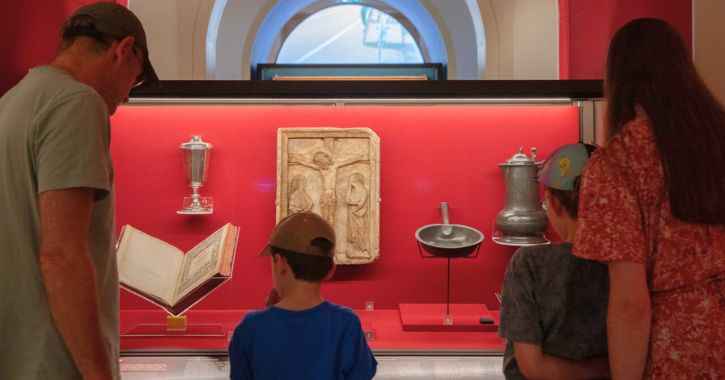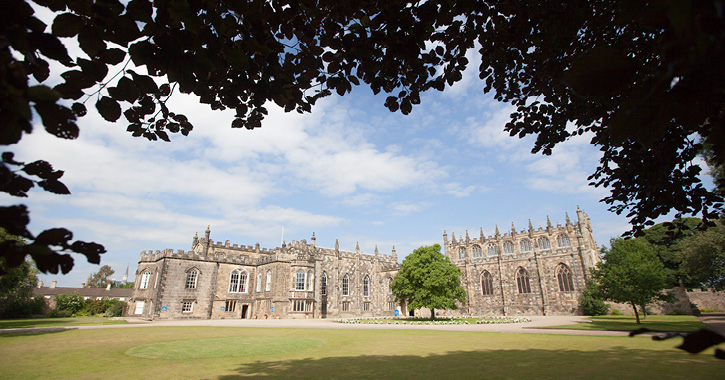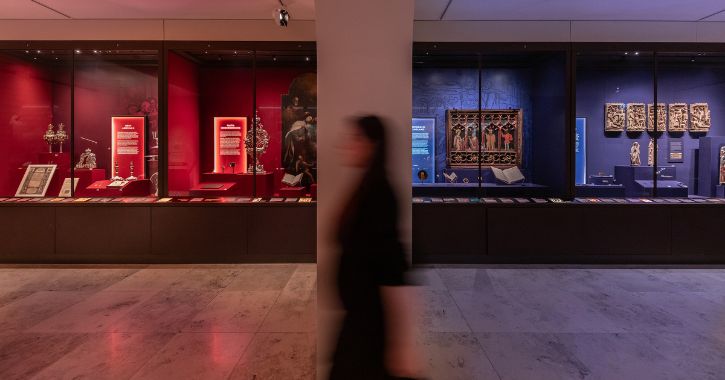Picture the scene: it's 1539 at Hampton Court Palace, candles flicker, courtiers in robes huddle under a vast ceiling, a hush falls, and through the doors walks King Henry VIII. As he strides forward, he is directed to see a treasure he has waited 4 years to arrive, and now, finally, it hangs before him: Saint Paul Directing the Burning of the Heathen Books.
Personally commissioned by Henry from the finest tapestry designer of the age, Peter Coecke van Aelst, and made of silk, wool and gold and silver thread, this huge tapestry (550cm by 340cm) is both a political and religious symbol, marking the fact that the King was not just a sovereign, but also Supreme Head of the Church of England.
.jpg)
Fast forward to today, and this national treasure, one of the most important tapestries of the Tudor era, is at risk: lost for hundreds of years before being found in Spain, there are just weeks left to save it and bring it back to Britain before it is sold privately and kept permanently abroad.
Heritage regeneration charity The Auckland Project in Bishop Auckland is spearheading a campaign to not only raise the £4.2m required to buy it, but to put it on display in the new Faith Museum at Auckland Castle, drawing visitors from far and wide to the area, and contributing to the continued regeneration of the town.
The tapestry started to be woven around 1535, and depicts a scene from the Bible where Saint Paul visits the city of Ephesus; the people throw their old books representing beliefs in magic and other “heathen” ideas onto a fire, watching them burn.
This scene had added resonance in the 1530s following Henry VIII’s decision to break away from the Roman Catholic Church and establish an independent Church of England – whereas the Pope looked to Saint Peter, Henry was comparing himself to Saint Paul. The Break with Rome was a monumental moment, but Henry was keen to dispel notions that he was a Protestant, and during his reign he allowed the burning of books - and people - which deviated from traditional religious practices.
.jpg)
There may be an added contemporary relevance to the scene, as now it is not uncommon to see objects, texts or symbols burned in videos on social media, where these shocking or performative actions seem to replace discussion or debate of different ideas.
Yet why here, why Auckland Castle and its Faith Museum?
This tapestry is a magnificent example of art being used to send religious and political messages, and aside from its striking biblical scene, it is that, this was commissioned as a symbol of Henry VIII’s new status as Supreme Head of the Church of England, one of the turning points in English history and central to the Reformation.

In the Faith Museum, the tapestry can be seen in the context of 6,000 years of faith in Britain, enabling visitors to explore its stories. Each object in the museum is a witness to someone’s faith, and this is a witness to Henry’s. Furthermore, it is very much a companion to another item on display: a rare surviving copy of the English translation of the New Testament by William Tyndale (1536).
When Tyndale’s Bible was first published in 1526 it caused consternation, with critics arguing that it promoted ideas of reformed religion. Copies were burned in public, overseen by the Bishop of London, Cuthbert Tunstall. Tunstall would later become Prince Bishop of Durham, living in splendour in Auckland Castle. Indeed, the Prince Bishops were some of Henry VIII’s chief advisors, not least Thomas Wolsey.

Auckland Castle saw numerous renovations during the Tudor era, and was even raided on Henry VIII’s orders when he suspected that Tunstall may have committed treason when advising Catherine of Aragon during their divorce. A bishop’s palace, home to figures at the centre of the Reformation, and now a place where the story of faith - and the story of Britain - can be explored in a state of the art museum, is a truly fitting place for this tapestry to be displayed.
The Auckland Project are now within touching distance of raising £1m in their public campaign, thanks to over 1,000 people, trusts and foundations contributing so generously, including outstanding support from the Art Fund. They also await the outcome of a major bid to the National Lottery Heritage Fund for support. In addition, they have received the support of thousands of members of the public who have signed up to back the campaign.
Should The Auckland Project succeed in raising the funds and securing the lifting of an export ban from Spain, the tapestry’s new home will be Bishop Auckland, in the heart of Britain. It will be one of the star attractions in the museum, and the centre of an extensive public and community engagement programme.

Now picture a new scene: it's the summer of 2024 at Auckland Castle, and as you walk through the lower floor of the Faith Museum, passing treasures spanning the centuries, your anticipation builds as you climb the stairs; you enter the Great Gallery - a vast, vaulted space simultaneously modern and yet inspired by medieval buildings - and there, in the centre, hangs the very same tapestry that dazzled Henry VIII nearly 500 years before. Saved for the nation, there to be a source of study, wonder and inspiration for generations to come: Saint Paul Directing the Burning of the Heathen Books.
You can help make the difference - join the campaign, as every penny counts.
Related
Comments
Comments are disabled for this post.



 to add an item to your Itinerary basket.
to add an item to your Itinerary basket.
.png)





